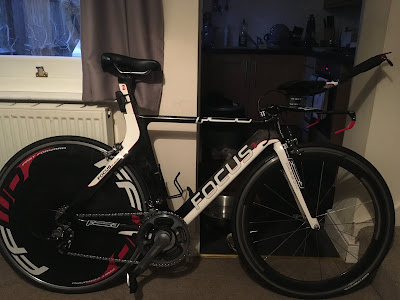The Process

In my last blog, I wrote about the second part of my season culminating in the A21 Interclub TT.
Long story short: I snuck under 20 minutes in average conditions, achieving a goal I had been chasing for a couple of years since doing 20:13 on the same course back in August 2019.
Everyone has their favourite TT course, and the A21 is undoubtedly mine.
Having finally 'done a 19', I then went and did another on the same course two weeks later.
This time, conditions were more favourable.
It was great to get to the halfway point and know that I was on for a huge PB.
Rather than straining every sinew to squeeze out every second on the way back, I was able to relax and attack the three slow parts whilst carrying some great speed in the interim.
Incidentally, I probably went faster because I was relaxed and enjoying it, rather than tense and fighting the effort. Sometimes easier said than done.
I had intended to ride a few 25s after the A21 TT but, because of cancellations and postponements, I only ended up doing one – finishing third on the Uckfield course (again).
With no more races, I took a two week break to mentally switch off from cycling, do a bit of running and get into the swing of lifting again.
 |
| No weights meant getting creative with what could offer resistance |
Unlike 2019 and 2020, I didn't really need an end-of-season break this year.
In the past I've been hyper-focused on the outcome and, when things don't go according to plan, got stressed.
This season, my aim was to focus on the process – and specifically enjoying it.
Whether I had a sweetspot session planned on the TT bike, zipping up and down a dual carriageway (my idea of Heaven), or an easy 90 minute zone 2 ride just ticking over, I aimed to enjoy every ride.
If I enjoyed the majority of rides, and completed something similar to the planned session, I knew that I would be in a good place when it came to racing.
It sounds silly but I often didn't enjoy cycling in 2019 and 2020, particularly around big races.
I'd overanalyse things to the point that they stopped becoming enjoyable and started being a chore.
So, with those lessons learned, let's take an objective look at the 2021 season.
2021 – What Went Well
Racing to speed
Varying my effort in response to my speed has been a game changer for me.
It sounds simple: pedal harder when going slower, recover when going faster.
In the two-and-a-bit years I've had access to power data, I've been guilty of focusing on the power number rather than speed. It's easy to forget that:
Power is just a proxy for speed.
What good is a power PB if you went slower?
Power meter
Whilst power in a race is less important to me, power numbers in training are crucial.Previously I used heart rate to gauge effort on road bike rides which obviously has its flaws.
In October last year, I bought power meter pedals so I could have access to power on my road bike.
This has meant I could make every ride more efficient, but also it gives me a better idea of where I'm going right/wrong when looking back at large blocks of training.
Time under tension
This season I have worked on minimizing my coasting time in order to get better at maintaining near constant pressure on the pedals.
In lifting, time under tension (TUT) is used as a way of quantifying the work being done.
Imagine two people who both bench press 100kg for 10 reps – the person doing them at a two-second-down, two-second-up speed is getting 40 seconds of TUT; the person you see in the gym smashing the reps out is probably getting 15 seconds, if that.
In theory, they both lifted the same weight, the same number of times, but the difference in their adaptation signals would be night and day.
 |
| I'm strangely proud of this |
Position
I didn't get many pictures of my position this season, but the above image gives you a good idea of how comfortable I was in my time trial position. |




This comment has been removed by the author.
ReplyDeleteA good read, thanks for writing up. Interestingly I see Mike Broadwith bases much of his training on his commute layering on what appears to be sweetspot sessions. Perhaps not optimal but he's obviously had great success in longer TT's.
ReplyDelete